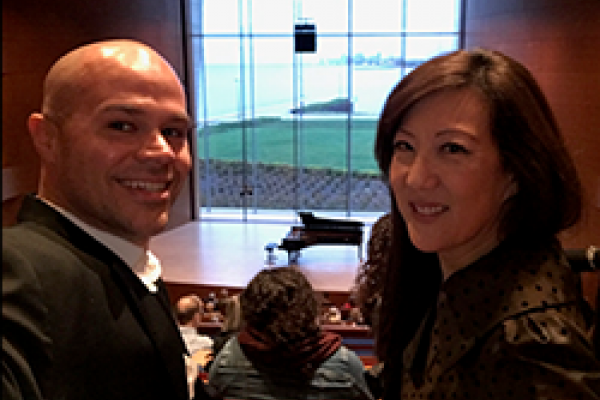
Each year, the Arts and Humanities celebrate faculty who have recently been promoted to the rank of professor by asking each to make a public presentation on his or her body of research or creative activity and current projects.
As part of the Arts & Humanities Inaugural Lectures, Caroline Hong, professor of piano, performs Franz Liszt's two-piano transcription of Beethoven's Ninth Symphony in collaboration with pianist Ryan Behan.
Ludwig van Beethoven’s Symphony No. 9 in D minor, Op. 125,
transcribed for Two Pianos by Franz Liszt
Ryan Behan, piano secondo
I. Allegro ma non troppo, un poco maestoso; II. Molto vivace; III. Adagio molto e cantabile; IV. Finale
Franz Liszt redefined the piano through his compositions for that instrument as well as his own virtuosity at the keyboard. He also helped circulate many other composers' music by making piano transcriptions and paraphrases. He transcribed Beethoven's nine symphonies brilliantly as well as faithfully at a time before recordings and repertoire-driven orchestral concert series. In doing so, he helped place these works at the center of the musical canon.
Liszt's two-piano transcription (1851) of Beethoven's Ninth Symphony is especially important. This was the symphony, closing with a setting of Friedrich Schiller's "Ode to Joy" for vocal soloists and chorus, that opened instrumental music up to the human voice and verbal expression. By crossing those boundaries, Beethoven's profound final symphony became important both to Liszt's development of the symphonic poem and to Richard Wagner's operas. Even with the loss of words and voices — and the substitution of two musicians for a hundred — Liszt keeps intact the Ninth's ability to deeply move its audience.
Arts & Humanities Inaugural Lectures
